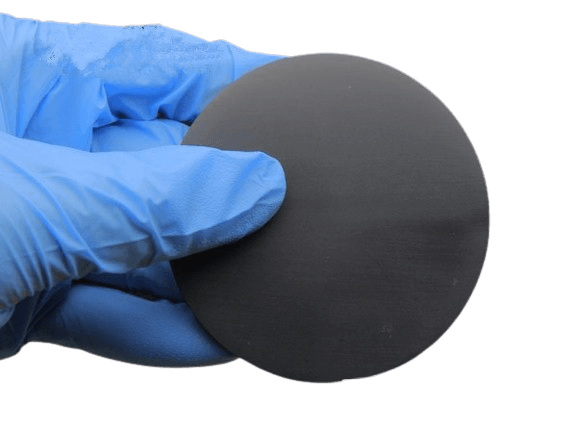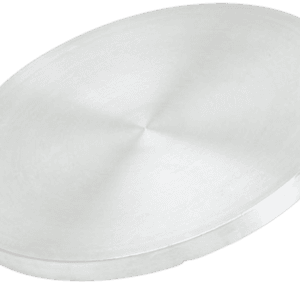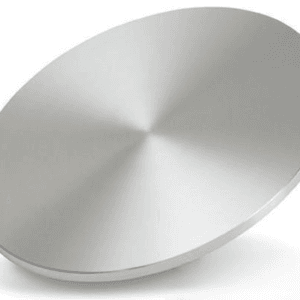ST0908 Cobalt Oxide Sputtering Targets, Co3O4
| Chemical Formula | Co3O4 |
| Catalog No. | ST0908 |
| CAS Number | 1308-06-1 |
| Purity | 99.9%, 99.95%, 99.99%, 99.995%, 99.999% |
| Shape | Discs, Plates, Column Targets, Step Targets, Custom-made |
Cobalt Oxide sputtering target come in various forms, purities, sizes, and prices. Thin Film Materials (TFM) manufactures and supplies top-quality sputtering targets at competitive prices.
Cobalt Oxide Sputtering Targets Description
The Cobalt Oxide Sputtering Target is a specialized material utilized in sputter deposition, a precise technique for depositing thin films onto substrates. This method is extensively employed in the production of electronic devices, solar cells, and other applications.
During sputtering, high-energy ions bombard the Cobalt Oxide Sputtering Target, causing atoms or molecules to be ejected from the target. These ejected particles then deposit onto a substrate, creating a thin film. The cobalt oxide thin film produced can exhibit unique electrical, magnetic, or catalytic properties, tailored to specific application needs and desired characteristics.
Related Products: Manganese Cobalt Oxide Sputtering Target, Cobalt Sputtering Target, Cobalt Oxide Sputtering Target, CoO
Cobalt Oxide Sputtering Targets Specifications
| Compound Formula | Co3O4 |
| Molecular Weight | 240.80 |
| Appearance | black solid |
| Melting Point (℃) | 895 |
| Boiling Point (℃) | 900 |
| Density (g/cm3) | 6.11 |
| Available Sizes | Dia.: 1.0″, 2.0″, 3.0″, 4.0″, 5.0″, 6.0″
Thick: 0.125″, 0.250″ |
Cobalt Oxide Sputtering Targets Application
The Cobalt Oxide Sputtering Target is ideal for applications in electrochromic devices, batteries, and catalysts. Its use enables precise control over the composition and thickness of the deposited thin film, making it a versatile tool in materials science and device manufacturing.
Cobalt Oxide Sputtering Targets Packaging
Our Cobalt Oxide Sputtering Targets are meticulously handled during storage and transportation to ensure that they retain their quality and remain in their original condition.
Get Contact
TFM offers Cobalt Oxide Sputtering Targets in various forms, purities, sizes, and prices. We specialize in high-purity thin film deposition materials with optimal density and minimal grain sizes, which are ideal for semiconductor, CVD, and PVD applications in display and optics. Contact Us for current pricing on sputtering targets and other deposition materials that are not listed.
Related Products
Related products
FAQ
What is a sputtering target?
It’s the source material (in solid form) used in sputter deposition to eject atoms or molecules that then form a thin film on a substrate.
What materials are used to make sputtering targets?
Targets can be pure metals (e.g., gold, copper, aluminum), ceramics (e.g., Al₂O₃, SiO₂, TiO₂), alloys, or composites—chosen based on the film’s desired properties.
How are sputtering targets manufactured?
They are produced by processes such as melting/casting for metals or sintering (often with hot isostatic pressing) for ceramics and composite targets to ensure high density and purity.
How does sputter deposition work with these targets?
In a vacuum chamber, a plasma (typically argon) bombards the target, ejecting atoms that travel and condense on a substrate, forming a thin film.
What factors affect the life and performance of a sputtering target?
Key factors include the target’s purity, density, grain structure, and the sputtering yield (i.e. how many atoms are ejected per incident ion), as well as operating conditions like power density and gas pressure.
How do I know when a sputtering target needs to be replaced?
Operators monitor target erosion (often by measuring the depth of the eroded “race track”) or track total energy delivered (kilowatt-hours) until it reaches a threshold that can compromise film quality.
Why do some sputtering targets need to be bonded to backing plates?
Fragile materials (such as many ceramics or certain oxides) and precious metals often require a backing plate to improve cooling, mechanical stability, and to allow thinner targets that reduce material costs.
What is the difference between DC and RF sputtering for targets?
DC sputtering is used for conductive targets, while RF sputtering is necessary for insulating targets (like many oxides) because it prevents charge buildup on the target’s surface.
How does reactive sputtering differ from standard sputtering?
In reactive sputtering, a reactive gas (e.g., oxygen or nitrogen) is introduced to form compound films on the substrate, but it may also “poison” the target surface if not carefully controlled.
Can I use customer-supplied powders to make sputtering targets?
Many manufacturers prefer to control raw material quality by sourcing their own powders; using external powders can risk impurities and inconsistent target properties.
What storage and handling procedures are recommended for sputtering targets?
Targets should be stored in clean, dry conditions (often in original packaging or re-wrapped in protective materials) and handled with gloves to avoid contamination, ensuring optimal performance during deposition.
What key parameters affect sputtering deposition rates?
Deposition rate depends on factors such as target material and composition, power density, working gas pressure, substrate distance, and the configuration of the sputtering system (e.g., magnetron design).





Reviews
There are no reviews yet.